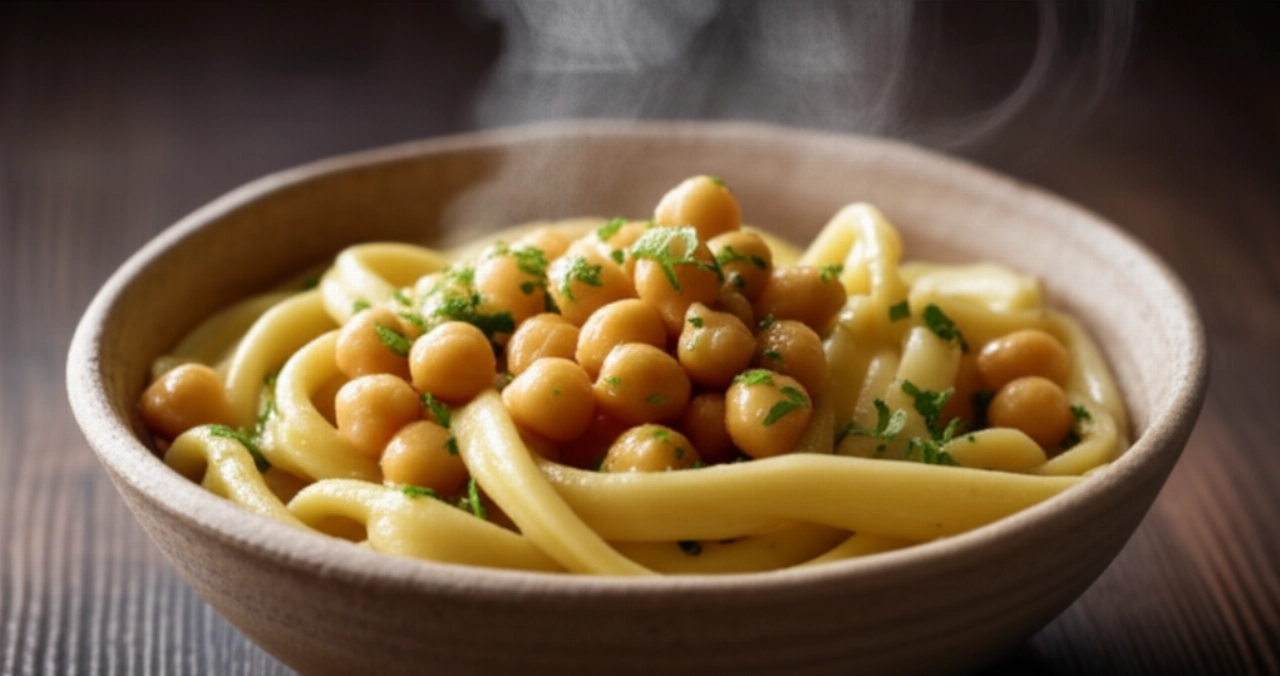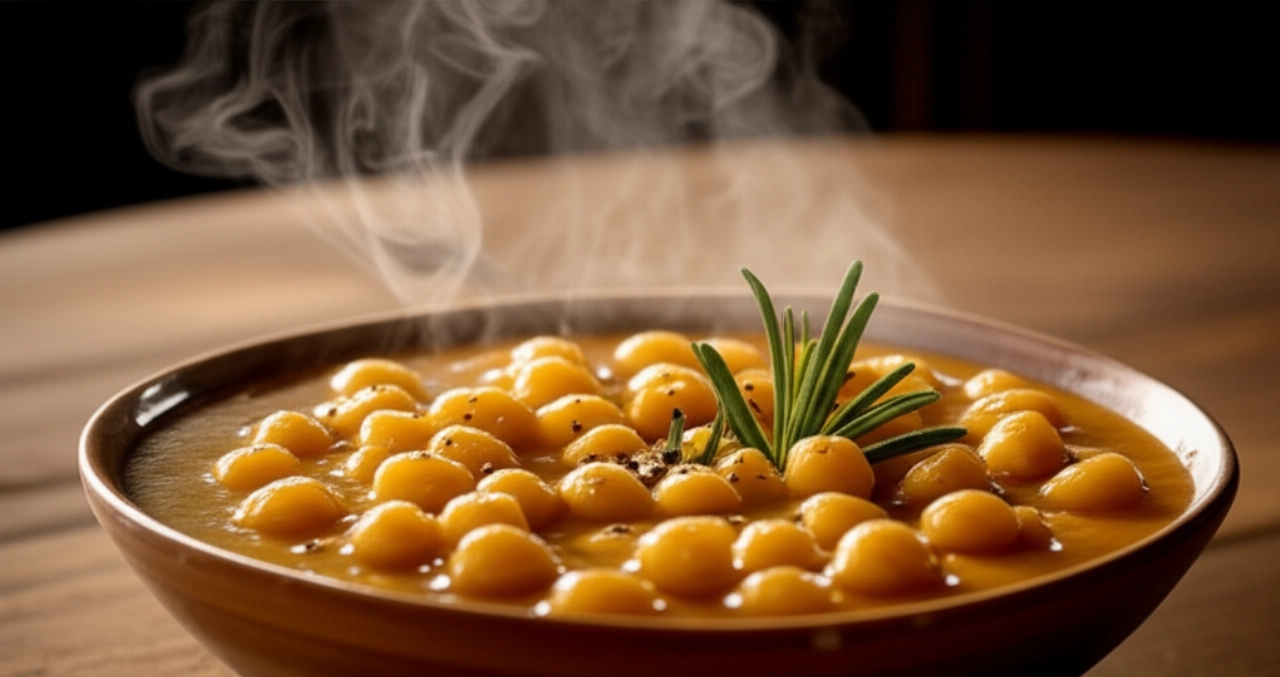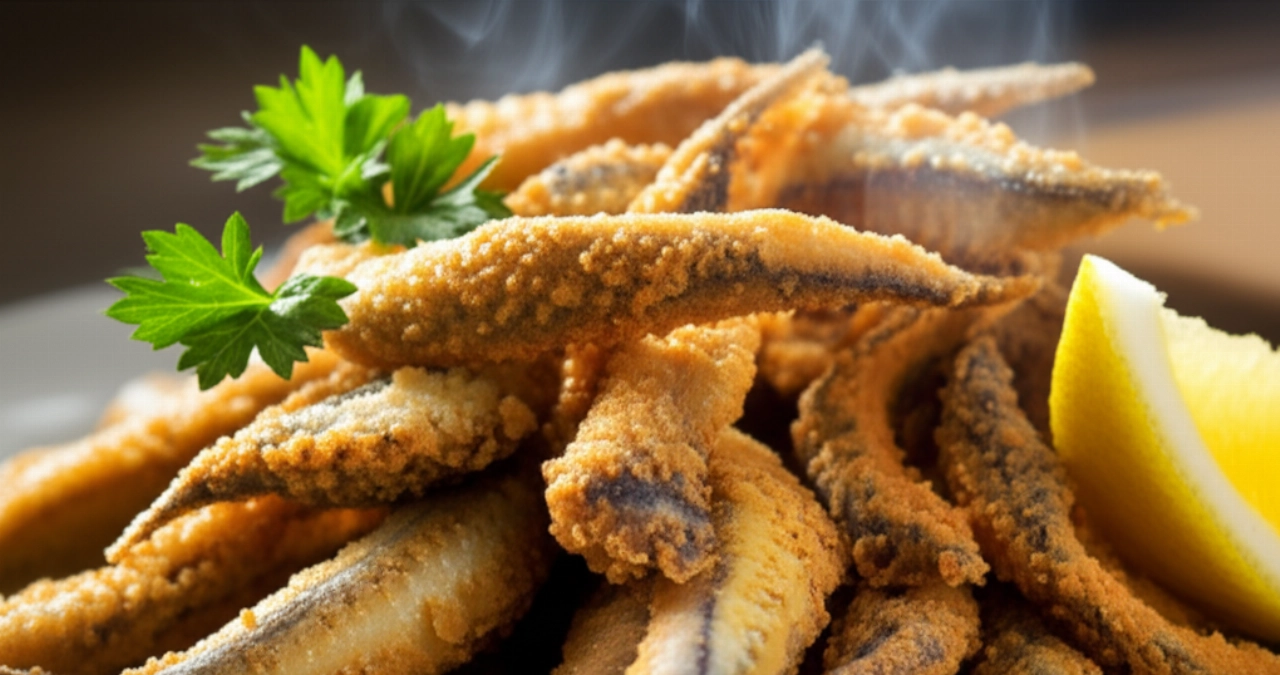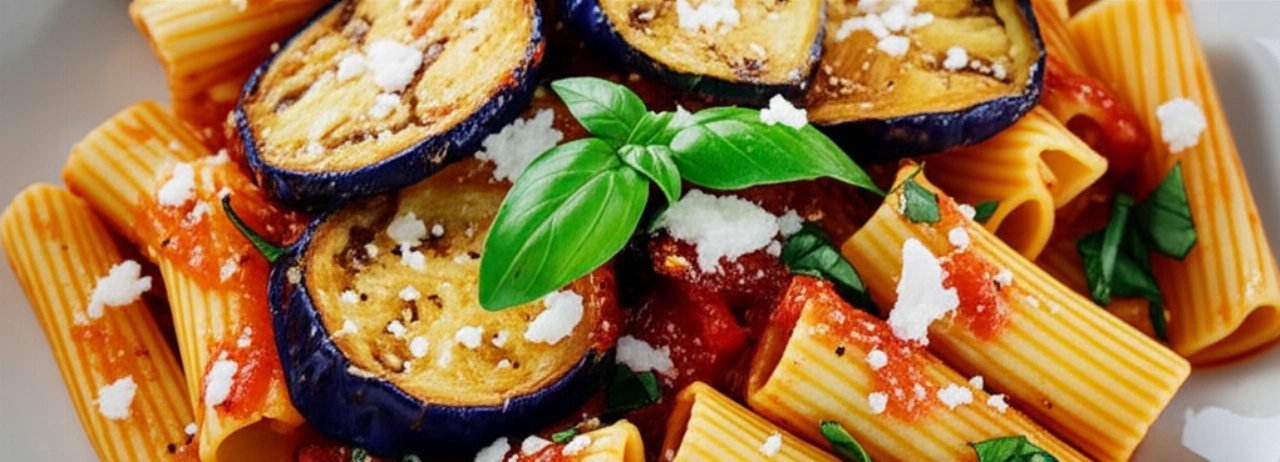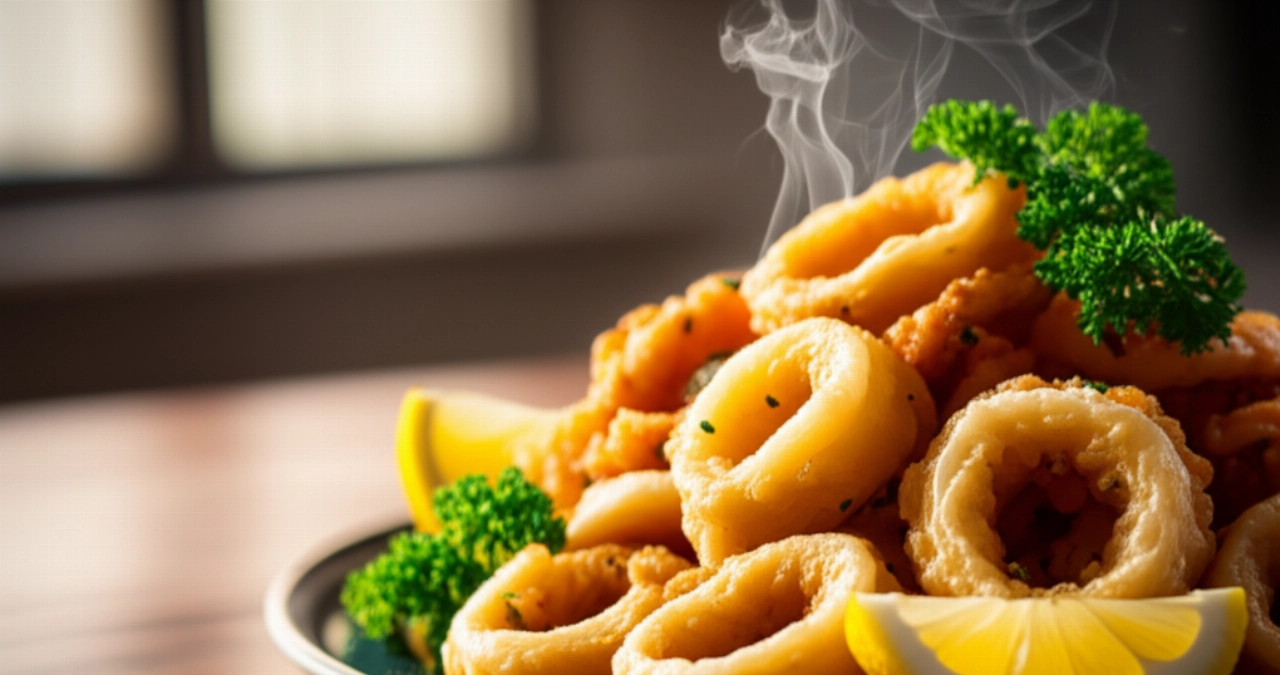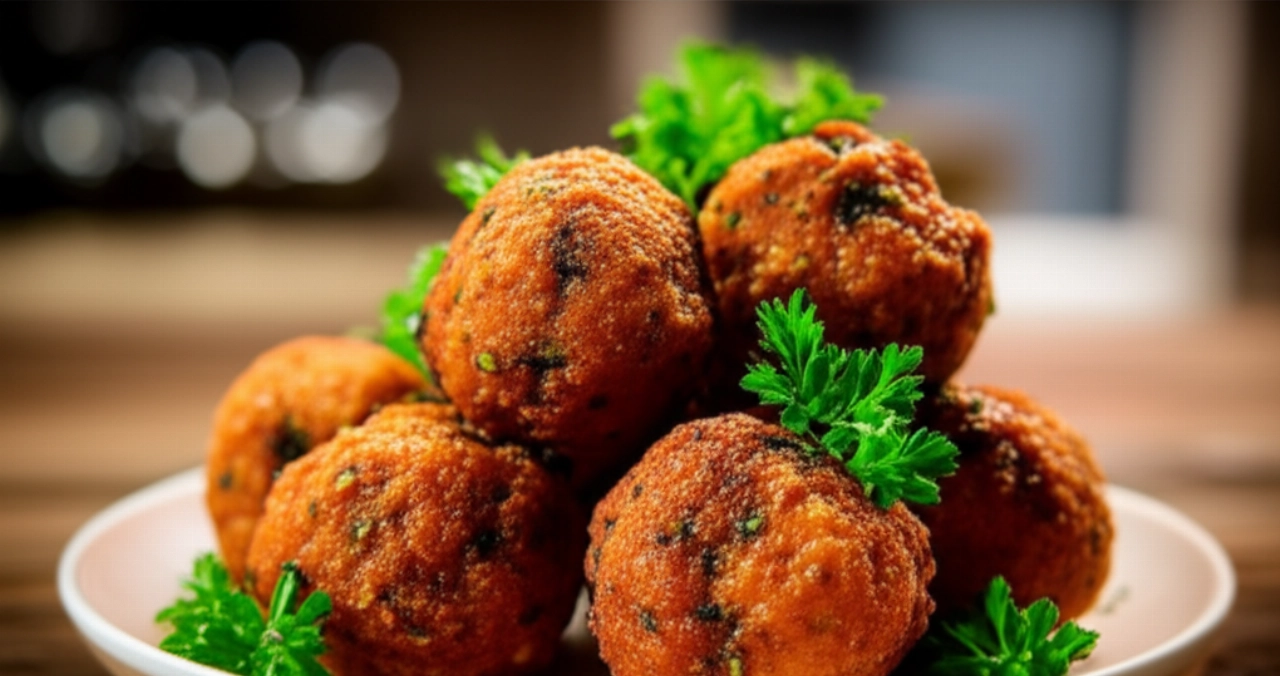There's a dish that, more than any other, encapsulates the soul of Salento, its history, its simple yet intense flavors: Ciceri e Tria. It's not just a first course; it's a warm embrace, a childhood memory, a masterpiece of contrasts where the softness of chickpeas meets the unexpected crispiness of fried pasta. A culinary experience that takes you straight to the heart of Puglia.
But how many times have you tasted Ciceri e Tria where the pasta was soggy, or the chickpeas bland? Finding the perfect balance between the creaminess of the legume and the crispiness of the pasta, the kind that 'crunches' under your teeth, seems like a challenge. The fear of making mistakes, wasting precious ingredients, or not replicating that authentic grandmother's flavor can deter even the most passionate cook.
Make yourself comfortable. On this page, you won't just find a list of ingredients, but the definitive guide, full of tricks and tips, to prepare the best Ciceri e Tria of your life. I'll guide you step by step to achieve the perfect balance between the creaminess of the chickpeas and the crispiness of the fried pasta, a Salento masterpiece that will make you fall in love at first bite, without mistakes. Success is guaranteed, and the taste of home will envelop you.
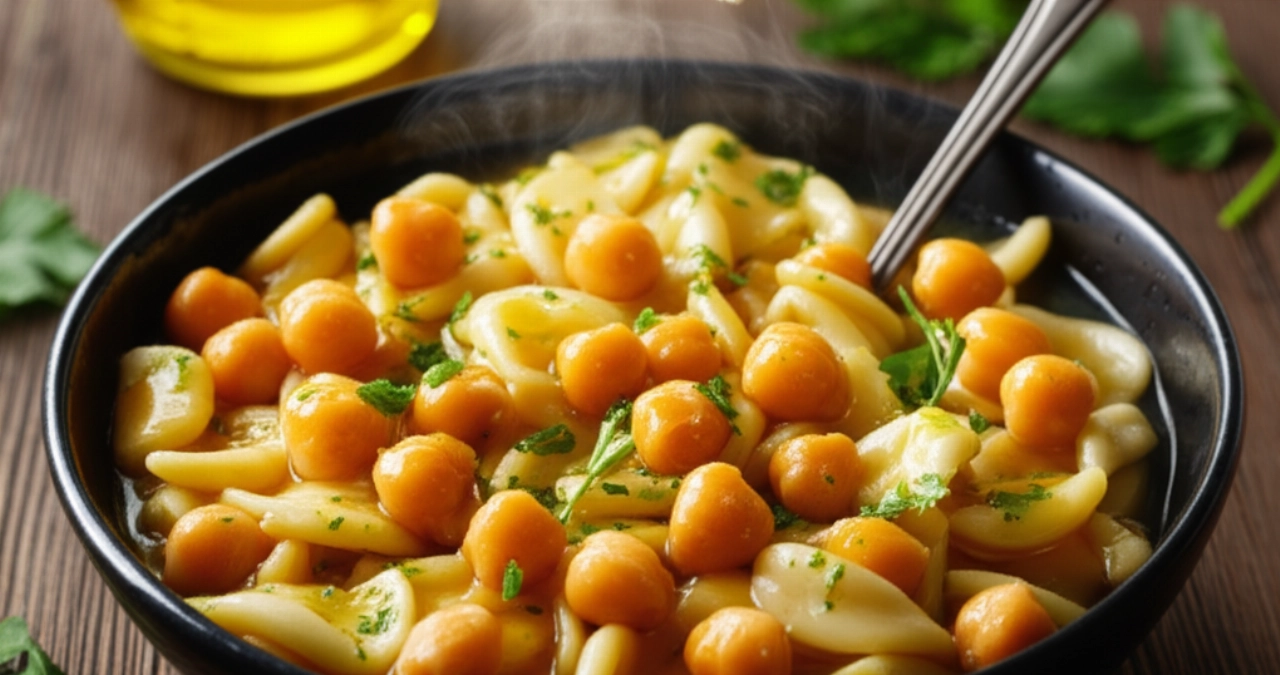
Ingredients for Perfect Ciceri e Tria: The Choice That Makes the Difference
For such an iconic dish, ingredient quality is fundamental. It's not just about quantity, but about carefully choosing each element, because that's where the true flavor is built.
- Dried Chickpeas (or high-quality canned): If you have time, use dried chickpeas and soak them for at least 12 hours. They will give you an unparalleled creaminess and flavor. If you're in a hurry, choose a can of pre-cooked chickpeas, but make sure they are of excellent quality, firm, and not mushy.
- Durum Wheat Semolina Flour: For the pasta, re-milled semolina is a must. It gives the pasta that elastic and porous texture that absorbs the sauce and becomes wonderfully crispy once fried.
- Salento Extra Virgin Olive Oil: Not just any oil, but a good Apulian EVO. It's the scent and flavor of our land, indispensable for the soffritto and for frying the pasta.
- White Onion: Sweet and aromatic, it's the base of the soffritto that will welcome the chickpeas.
- Fresh Cherry Tomatoes (or Passata): Few, but good. They serve to add a touch of color and acidity, without overpowering the chickpea flavor. If it's not season, an artisanal tomato passata will work perfectly.
- Vegetable Broth: Preferably homemade, it will add depth to the chickpea flavor.
- Fresh Chili Pepper (or dried): A touch of liveliness, dose it according to your taste.
- Salt and Black Pepper: Essential for balancing flavors.
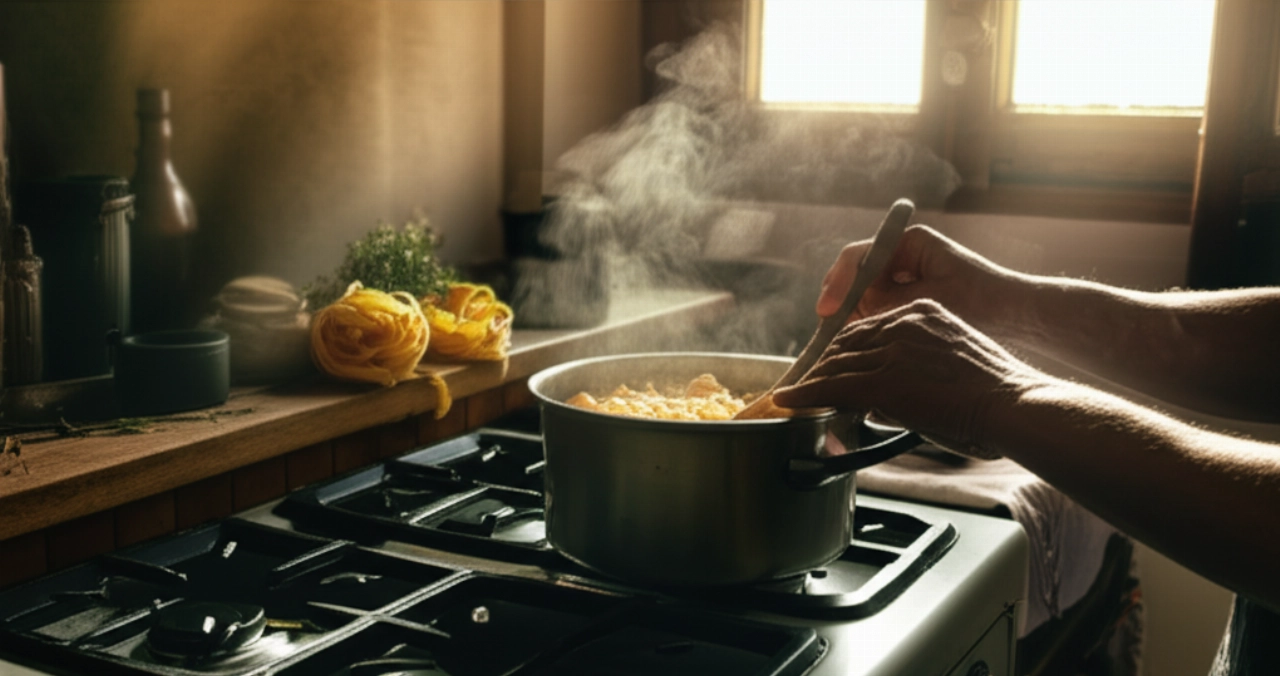
The 3 Mistakes That Ruin Ciceri e Tria (and How to Avoid Them)
Even the simplest dishes hide pitfalls. But with my tips, you'll avoid them with a smile!
- Pasta too thick or too thin: If the pasta is too thick, it risks remaining raw inside or not becoming crispy. If it's too thin, it will burn immediately. The ideal thickness is about 2-3 millimeters, like a sheet for tagliatelle.
- Chickpeas not cooked perfectly: Chickpeas should be tender, almost creamy, but not mushy. If they are hard, the dish will be unpleasant. If you use dried ones, soaking and slow cooking are fundamental. If you use canned ones, rinse them well and gently heat them in the soffritto.
- Imperfect pasta frying: The pasta must be fried in hot oil, but not smoking, and for a few moments. It should brown quickly and become crispy. If the oil is cold, it will absorb too much grease; if it's too hot, it will burn on the outside while remaining soft on the inside.

The Extra Touch: The Salento Secret for Authentic Flavor
Grandma always told me: “The chickpeas must be soft like a hug, the pasta crispy like a smile.” And to achieve that smile, there's a little trick few people know. A portion of the pasta, the one that won't be fried, is cooked directly in the chickpea broth. This allows the starch to bind and create a natural creaminess that envelops every single chickpea, making the dish even more comforting and flavorful. It's the magic of 'tria' (pasta) merging with 'ciceri' (chickpeas) in a perfect union.
Let's Prepare Ciceri e Tria Together: The Step-by-Step Guide
Follow each step carefully, and success will be guaranteed!
1. Prepare the Chickpeas (if dried)
- Soak the dried chickpeas in plenty of cold water for at least 12 hours, changing the water a couple of times.
- Drain the chickpeas and rinse them well. Transfer them to a large pot, cover with plenty of cold water (or vegetable broth), and bring to a boil.
- Reduce the heat to minimum, cover, and cook for about 1.5-2 hours, or until very tender. Add salt only at the end of cooking to prevent the skins from hardening.
2. Prepare the Fresh Pasta
- On a pastry board, pour the re-milled semolina in a well. Add a pinch of salt and the lukewarm water little by little, kneading vigorously until you get a smooth and elastic dough ball.
- Cover the dough with plastic wrap and let it rest for at least 30 minutes at room temperature.
- Roll out the pasta with a rolling pin (or with a pasta machine) until you get a thin sheet (about 2-3 mm).
- Cut the sheet into irregular strips, about 5-7 cm long and 1-2 cm wide.
3. Prepare the Soffritto and Chickpeas
- In a large pot, heat a generous drizzle of extra virgin olive oil.
- Add the finely chopped onion and chili pepper (if using). Sauté gently until the onion becomes transparent and soft, without burning.
- Add the halved cherry tomatoes (or passata) and cook for a few minutes, stirring.
- Add the cooked chickpeas (with some of their cooking water or vegetable broth if using canned ones). Mix well and let them flavor for about 10-15 minutes over low heat. Season with salt and pepper.
4. Fry the Pasta
- In a high-sided pan, heat plenty of extra virgin olive oil (or seed oil, if you prefer, but EVO gives a unique flavor) to about 170-180°C.
- Fry a portion of the pasta strips (about one-third) a few at a time, until golden and crispy. This will take only a few seconds.
- Drain the fried pasta on absorbent paper to remove excess oil. Set aside.
5. Combine and Serve
- While the chickpeas are simmering, add the remaining fresh pasta directly to the pot with the chickpeas.
- Cook the pasta in the chickpea broth for a few minutes, until al dente. If necessary, add a little hot water or broth to maintain the right consistency.
- Turn off the heat. Plate the Ciceri e Tria, garnishing each portion with plenty of crispy fried pasta.
- Serve immediately, piping hot, with a drizzle of raw olive oil and, if you like, a sprinkle of fresh black pepper.
Tips and Frequently Asked Questions about Ciceri e Tria
Here are some of the most common questions I get asked about this wonderful Salento dish:
Can I use pre-cooked chickpeas?
Yes, you can use canned pre-cooked chickpeas to save time. The important thing is to rinse them very well under running water before adding them to the soffritto. The flavor will be slightly less intense than homemade dried chickpeas, but the result will still be excellent.
Can I prepare the pasta in advance?
You can prepare the pasta dough in advance and store it wrapped in plastic wrap in the refrigerator for one day. Once cut, the fresh pasta strips should be used immediately or lightly dried on a floured cloth to prevent them from sticking.
How can I make the dish spicier?
For an extra touch of spiciness, you can increase the amount of chili pepper in the soffritto. Or, for a more intense flavor, you can add a whole fresh chili pepper (which you'll remove before serving) or a pinch of chili powder at the end of cooking.
Can it be frozen?
I advise against freezing Ciceri e Tria once ready, especially due to the fried pasta which would lose its crispiness. However, you can freeze cooked chickpeas separately, ready to be used in the future. Fresh pasta can be frozen after being rolled out and cut, by arranging it on a tray and then transferring it to food bags.
What is the best wine to pair with it?
Ciceri e Tria pairs perfectly with a fresh and savory white wine, perhaps a Vermentino or a Falanghina. If you prefer a red, opt for a light and fruity Salento rosé, which won't overpower the delicate flavors of the dish.
There you have it! Now you no longer just have a recipe, but all the secrets to bring a dish to the table that tastes of Salento, tradition, and love. A dish that will make you feel at home, even if you're not in Puglia.
Don't be afraid to experiment. Cooking is an act of creativity and love. But start from this solid base and you'll see that applause won't be lacking. Every bite will be a journey, every flavor a discovery.
Have you tried our recipe? We're very curious to see your masterpiece! Leave a comment below, tell us how it went, or share a photo on Instagram tagging @CercaRicette.it. If you loved this Ciceri e Tria, you can't miss our recipe for Fave e Cicorie or for an unforgettable first course like Orecchiette alle Cime di Rapa.
